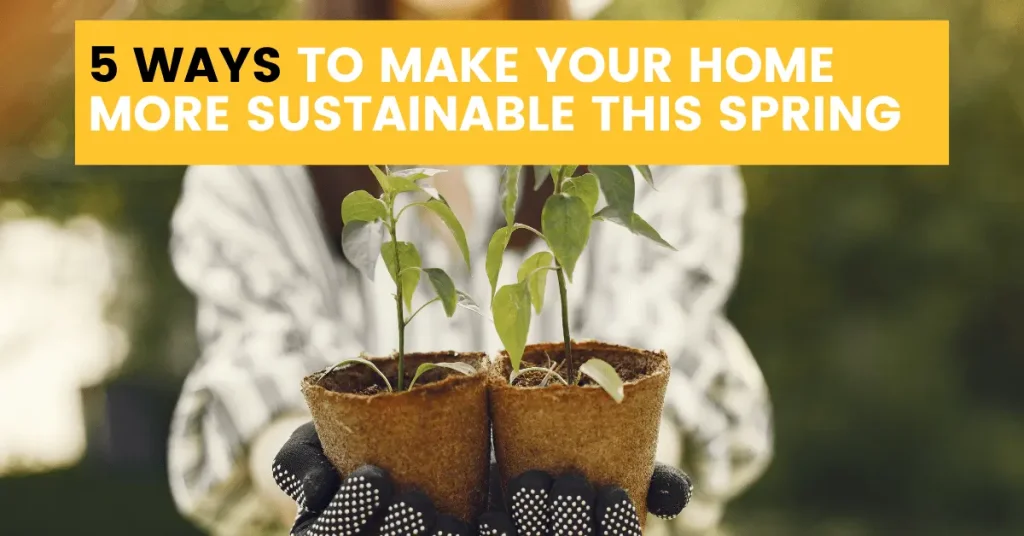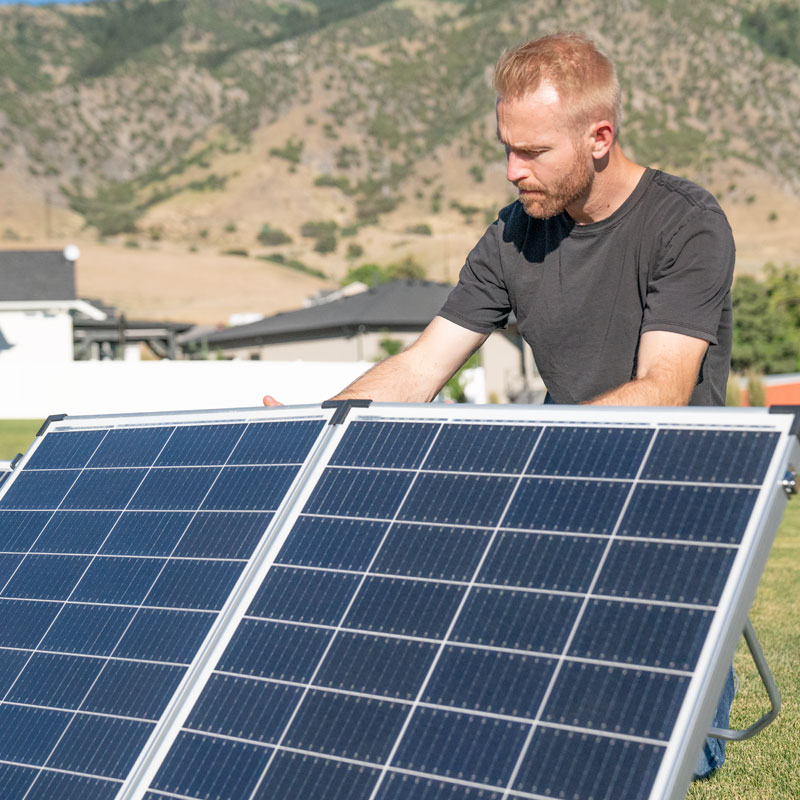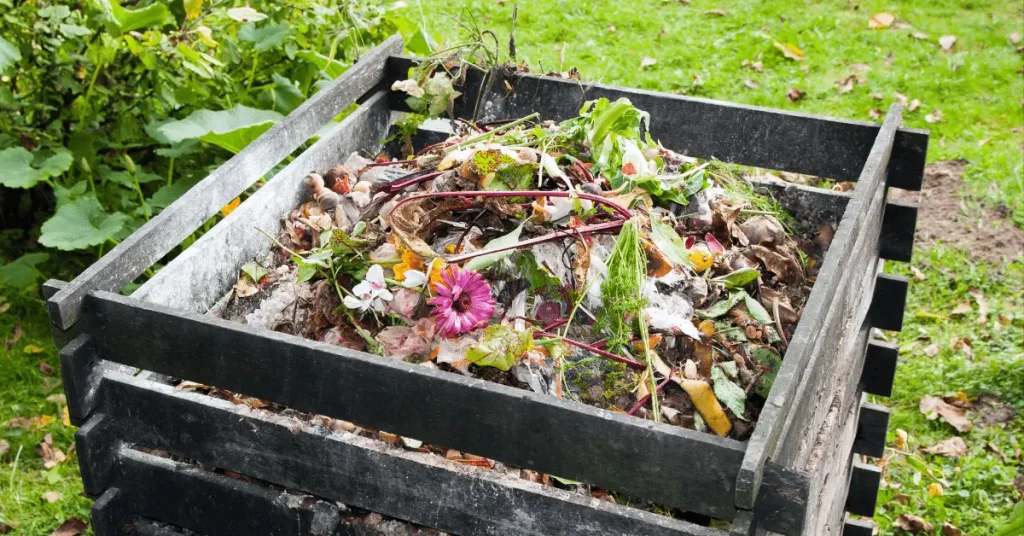As we enter the spring season of 2023, it’s a great time to start thinking about how we can make our homes more sustainable. With the help of Point Zero Energy, a portable solar company based in Idaho, you can take advantage of the power of the sun to create a more eco-friendly home. In this article, we’ll share five spring tips for a more sustainable home.

Spring is the perfect season to kickstart your sustainability efforts at home. Harnessing the power of the sun with a solar power system is an excellent way to achieve this goal. By investing in a solar power station and solar panels, you can not only reduce your energy bills but also significantly lower your carbon footprint.
A solar power station allows you to store the energy generated by your solar panels during the day, making it possible to use that power even when the sun isn’t shining. This means you can keep your home running on clean, sustainable energy all day and night, without relying on non-renewable sources of power. With the Titan power station from Point Zero Energy, you can rest assured that you have a reliable and efficient energy storage system that meets your needs and budget.
In addition to energy storage, solar panels themselves can make a significant impact on your home’s sustainability. By generating clean energy from the sun, you can reduce your reliance on grid-supplied electricity, thereby reducing your overall carbon footprint. Installing solar panels on your roof also protects it from the elements, extending its lifespan, and preventing potential roof damage. Point Zero Energy offers a wide range of solar panels with varying efficiency ratings, allowing you to choose the best option for your unique energy needs.

As temperatures rise during the warmer months, it’s common for homeowners to immediately turn on their air conditioning to combat the heat. However, this quick solution may not be the most energy-efficient or cost-effective option. Waiting a bit longer before turning on the AC and relying on alternative cooling methods can significantly save energy and money.
According to the U.S. Department of Energy, heating and cooling account for almost half of the energy usage in an average American household, air conditioning accounts for about 12% of U.S. home energy expenditures. By reducing air conditioning usage, homeowners can contribute to the reduction of carbon emissions and help preserve the environment.
One effective way to control the temperature in your home while conserving energy is to use a smart thermostat. Smart thermostats allow you to set schedules and automate temperature controls based on your preferences, so you can avoid wasting energy cooling an empty house. Additionally, some smart thermostats are equipped with features such as motion detection and geofencing, which can adjust temperature settings based on the presence or absence of occupants. According to Energy Star, you could save 8% on your heating and cooling costs each year by making the switch.
It is absolutely alarming to learn that the average American discards 70 pounds of textiles and other items every year, while only 15% of consumer clothing gets recycled, and a mere fraction of other items. This results in 85% of used textiles ending up in landfills, causing significant environmental damage.
In the US alone, over 15 million tons of used textile waste is generated annually, while the average American generates 4.4 pounds of trash per day, adding up to around 1,600 pounds of trash per year. This waste ends up in landfills, polluting the air and water, and releasing toxic gases into the environment.
One effective solution to reduce waste is buying secondhand items, including clothes, appliances, and other household items. Thrift stores, garage sales, and online marketplaces are excellent sources of pre-loved items that are still in great condition and functional.
Reselling or donating appliances and electronics that still work but are no longer needed is another excellent way to extend their lifespan and prevent them from ending up in landfills. Many donation centers and recycling facilities accept gently used items and dispose of them responsibly or refurbish and resell them.
Spring is the perfect time to start composting, as it’s a great way to reduce waste and create nutrient-rich soil for your garden. Composting is the process of breaking down organic materials using natural decomposition to turn them into rich soil.
It’s important to note that not all items can be composted. For example, meat and dairy products should not be composted as they can attract pests and create odors. On the other hand, things like fruit and vegetable scraps, coffee grounds, loose leaf tea, used paper napkins and paper towels, cooked pasta and rice, stale crackers, and much more can be composted. By composting, you can help enrich your soil and reduce methane emissions from landfills – helping to lower your carbon footprint.
So this spring, why not start your own compost station and turn your waste into something useful? You’ll be doing your part to reduce waste and help the planet.

Finally, going paperless is an easy way to reduce your carbon footprint. You can opt for digital bills and statements, use electronic documents instead of paper ones, and even switch to e-books and audiobooks instead of physical ones. By reducing your paper consumption, you’re helping to conserve natural resources and reduce waste.
In conclusion, there are many ways to make your home more sustainable this spring. By taking advantage of solar power with the help of Point Zero Energy, you can reduce your carbon footprint and save money on your energy bills. Whether you invest in a solar power system, conserve energy with a smart thermostat, buy secondhand, create a compost station, or go paperless, you’re making a positive impact on the environment.🌎
